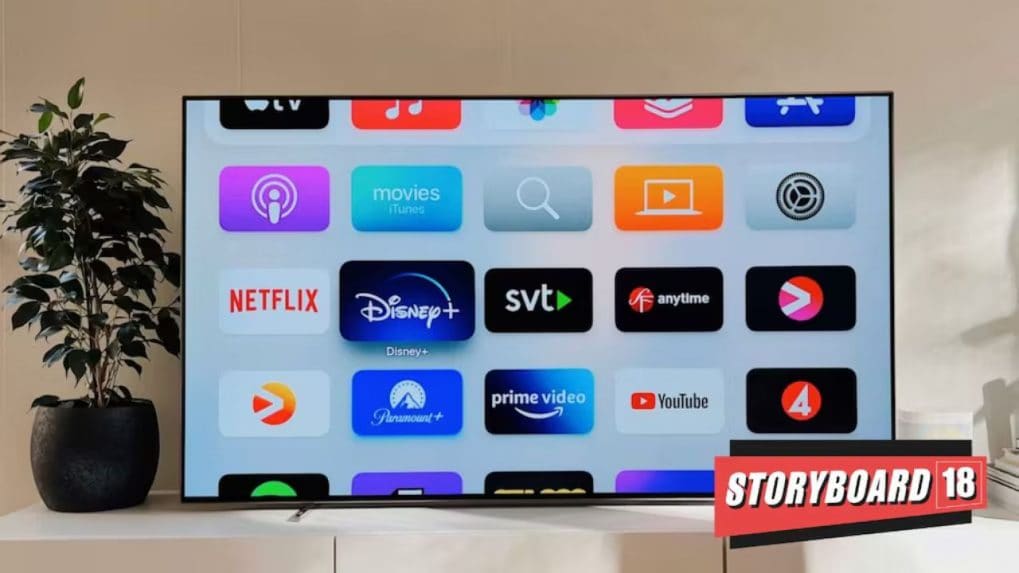Digital
Why OpenAI is hiring 100 ex-bankers: Inside the ChatGPT-maker's secret project to automate Wall Street's grunt work

YouTube is cementing its dominance in the streaming ad landscape, with its advertising revenue rising 13 percent year-on-year to 9.8 billion dollars in the second quarter, up from 8.7 billion dollars a year ago, according to parent company Alphabet’s latest earnings. The platform's growing influence on television is equally telling. A Nielsen report recently found YouTube held the largest share of TV viewing for three consecutive months, commanding 12.4 percent of total audience time spent on television.
As YouTube expands its presence across screens and formats, from Shorts to Connected TV, rival platforms are not sitting still. Streaming giants like Netflix, Amazon Prime Video, and HBO Max are ramping up ad integrations and courting performance-focused marketers. Netflix, notably, aims to double its advertising revenue this year, with analysts estimating it is already pulling in around 3 billion dollars.
Yet the battle between YouTube and OTT platforms is no longer just about who captures more eyeballs. It is a question of performance versus storytelling, scale versus depth, and precision versus immersion.
Why YouTube Still Wins at Performance
YouTube’s most potent weapon is intent. “Search is where the high-intent magic happens,” says Sindhu Biswal, CEO and Founder of Buzzlab. A user typing “best laptops under 50K” is not just watching passively — they are halfway down the purchase funnel. That kind of active consumer behavior makes YouTube a magnet for brands chasing conversions.
Alok Pandey, VP of Sales at Xapads, shares a real-world example: “A beauty brand we work with saw a 2.3x increase in conversion rates after investing in mid-funnel content on YouTube versus Instagram.” He adds that when paired with Google’s first-party data, YouTube’s layered personalization drove up to four times higher view-through-to-conversion rates for clients.
That personalization is backed by deep integration across Google’s ecosystem. Akshay Chaturvedi, Chief Business Officer at VDO.AI, points to YouTube’s “unified data ecosystem” and “real-time intent signals from Search, Watch History, and broader Google interactions” that allow for AI-led targeting and campaign optimization at scale.
OTT’s Advantage: Immersion, Not Just Impressions
Still, OTT platforms are making a strong case for themselves, especially for brands focused on brand-building or longer consideration cycles. “OTT is no longer just reach — it is smart reach,” says Biswal. Through programmatic overlays and QR-enabled attribution, platforms like Netflix and Prime Video are moving beyond awareness into mid-funnel territory.
“OTT sets the mood, builds desire, creates FOMO,” she adds. “For higher AOV brands or those with longer sales cycles, OTT is increasingly part of the performance mix.”
Chaturvedi agrees that OTT’s strength lies in flexibility. By combining data from automatic content recognition, data management platforms, and commerce signals, these platforms are “increasingly effective at reaching niche and high-value audiences, particularly in a post-cookie landscape.”
Marketers are also finding value in pairing OTT’s immersive environments with YouTube’s performance formats. “Rather than roadblocks, OTT faces opportunities for alignment,” Chaturvedi notes, especially around measurement, interactivity, and ecosystem diversity.
Transparency and Measurement Still a Work in Progress for OTT
But OTT’s evolution is not without growing pains. Samir Karpe, Country Manager at DoubleVerify India, flags persistent challenges around transparency, standardization, and media quality. “Many streaming environments in India operate within app-based frameworks where visibility into the content on which ads run is limited,” he explains.
That opacity creates issues for advertisers, especially at the premium price points CTV demands. According to DoubleVerify’s research, 71 percent of Indian marketers are concerned about brand safety in streaming environments. “We have seen a 39 percent global increase in app transparency measurement, signaling that the appetite for accountability is not only present but accelerating,” Karpe says.
The lack of consistent measurement also complicates cross-platform strategies. While YouTube benefits from Google’s privacy-resilient infrastructure and AI modeling, OTT platforms are still ironing out how to standardize reporting across disparate apps, devices, and media buyers.
YouTube’s Living Room Play and the Bigger Battle
Another overlooked shift is how YouTube has blurred the lines between digital and TV. “YouTube’s edge lies in its combined mobile and living room experience,” says Sahil Chopra, Founder and CEO of iCubesWire. “This gives creatives more freedom — from premium TV spots to performance-based assets.”
With over two billion users engaging with Shorts each month, YouTube is also driving outcomes for Gen Z-focused brands. “There is uplift in branded search, conversions, and campaign efficiency,” Chaturvedi notes, especially as newer tools like Demand Gen and AI-led creative formats roll out.
OTT still holds the edge in cinematic storytelling, but YouTube’s hybrid format is redefining what television even means. As Chopra puts it, “The real shift from last year is that the battle is no longer between digital and TV. We are now moving toward digital TV, and YouTube leads that game.”
YouTube may be pulling ahead in ad dollars and intent-driven outcomes, but OTT is not fading — it is adapting. While YouTube offers scale, speed, and precision, OTT platforms offer context, immersion, and creative freedom. For marketers, the choice is no longer either-or. The future may lie in smart orchestration, where YouTube and OTT are not competitors, but complements.
From purpose-driven work and narrative-rich brand films to AI-enabled ideas and creator-led collaborations, the awards reflect the full spectrum of modern creativity.
Read MoreIn a wide-ranging interview with Storyboard18, Sorrell delivers his frankest assessment yet of how the deal will redefine creativity, media, and talent across markets.